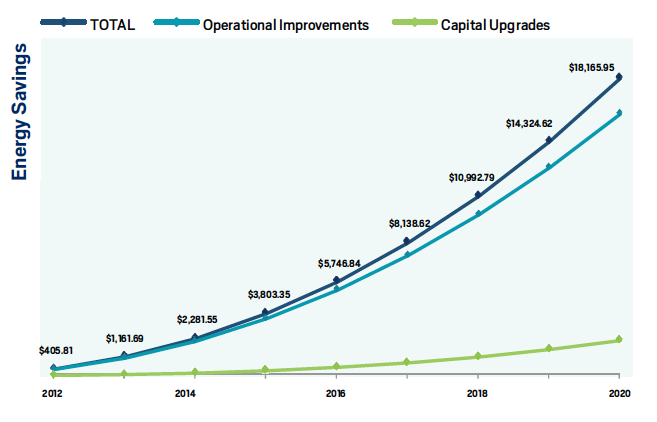Energy Transparency Laws Could Create 59,000 Jobs And Cut Energy Costs $18 Billion By 2020
 As the saying goes, “you can’t manage what you can’t measure.”
As the saying goes, “you can’t manage what you can’t measure.”And if you can’t measure it, you can’t make money from it.
If we want to get serious about making this country more energy efficient, we need better measurement tools to help us understand how much our buildings are consuming. After all, buildings account for 40% of energy use in the U.S.
One of the simplest tools is the energy disclosure law — a requirement that all buildings over a certain size make their energy consumption public. The law may also include a rating system for ranking the performance of buildings online or in real estate dealings.
By making the information public and setting up a rating system, it provides an additional incentive for building owners to make efficiency upgrades.
There are currently five cities and two states that have passed such laws for commercial and multi-tenant buildings. Around four billion square feet of buildings are covered under these areas — double the number of LEED buildings in the U.S.
However, there’s still no serious push for the policy on a national level. And that could be preventing building owners from saving tens of billions of dollars in energy costs.
Two new reports from the Institute for Market Transformation illustrate how this straightforward policy could break the energy efficiency retrofit market wide open, potentially unlocking $18 billion in energy savings and 59,000 jobs by 2020.

The energy disclosure laws covered in the report would cover commercial buildings 25,000 square feet and greater. It would also cover multifamily residential buildings 20 units and greater.
Here’s how researchers describe the tool:
Brilliant in its simplicity, public disclosure of building energy consumption will start a stampede to upgrade buildings – motivating the good buildings to achieve higher levels of efficiency and prompting the laggards into action.
Using the nationally accepted ENERGY STAR performance scoring system – which grades buildings from “1” to “100” and is based on actual utility bills – an anemic score of 17 in a “class A” Manhattan office tower will generate action: An energy auditor will be hired, meters installed, lighting ungraded, fans and motors tuned, and old refrigerators replaced. The ENERGY STAR score of 17 becomes 77. New jobs will be created and the building owners and tenants will spend less on their utility bills.
The law isn’t designed to penalize or threaten building owners. It simply provides an opportunity for operators to track their energy use, thus providing an incentive to upgrade buildings and control costs. As we see in cities and states that require energy disclosure, commercial building operators have been responding to these laws, thus creating new opportunities for energy efficiency businesses in the area.
The IMT report highlights a number of businesses that are seeing a direct impact from disclosure laws. For example, after New York City passed its law, Ecological, a company that develops sustainability plans for building owners, gained more than 400 clients.
“We saw a significant rise in the number of clients that are interested in the actions they can take to improve their building’s efficiency, and their bottom lines. We anticipate that this trend will continue in the New with each year of compliance reporting,” said Lindsay Napor McLean, the company’s chief operating officer.
All that activity results in new jobs. Working with the Political Economy Research Institute, IMT estimates that a nationwide initiative would create more than 59,000 net jobs over the next eight years.
Simple, effective national efficiency laws could also help attract businesses looking to set up shop in the U.S.
Tim Donovan is CEO of Day One Energy Solutions, a company deploying efficiency and energy-tracking technologies on commercial and government buildings. He’s based in California, but does business in the UK. He told Climate Progress recently that his business had moved over the UK because of its “bold, aggressive steps to address climate change, and deploy efficiency and renewables.”
With a strong nationwide efficiency program, carbon reduction requirements, and a bank to help finance projects, Donavan calls it “very fertile ground for efficiency.” Of course, the U.S. government has put unprecedented support behind efficiency in recent years. But it hasn’t come together in a comprehensive way like in other countries.
“I just don’t see the U.S. as the best market. As we continue to grow in the UK, we’d love to be over here.”
A national energy disclosure law for large commercial buildings is one piece of making the U.S. a more attractive market. It would send a strong signal to the business community that the country is committed to efficiency — helping build new companies, create jobs and save buildings operators billions of dollars.
You can return to the main Market News page, or press the Back button on your browser.

